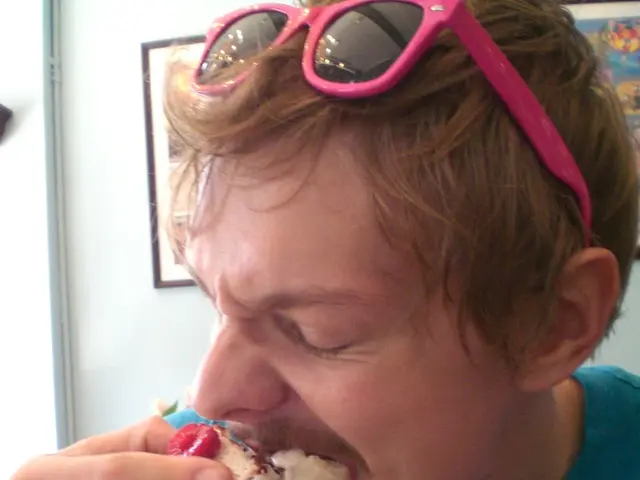Managing Feline Diabetes Without Insulin: An Examination
Managing Feline Diabetes Without Insulin: Understanding Alternative Treatment Options
For cat owners faced with a diabetes diagnosis for their furry companion, navigating treatment can feel overwhelming. While insulin remains a critical component in managing diabetes in cats, alternative, injection-free options exist for some felines. Here, we delve into the factors that determine which cats are potential candidates for insulin alternatives.
Is It Possible to Treat Diabetes in Cats Without Insulin?
Yes, it is possible to manage diabetes in cats without insulin, but it's not suitable for every cat. Insulin therapy remains the primary treatment for diabetes in cats, but oral treatments can be an option for cats diagnosed with type 2 diabetes and suitable health profiles.
Type 2 diabetes, particularly in overweight and obese cats, is caused by insulin resistance, which means the body produces enough insulin but fails to respond appropriately. In contrast, type 1 diabetes occurs when the body produces insufficient insulin. Cats with type 1 diabetes require insulin injections to control their blood sugar levels.
Treating Diabetes in Cats Without Insulin
Administering oral medication daily to control blood sugar levels is the primary method of managing diabetes in cats without insulin. The treatment plan remains largely the same as for cats receiving insulin, including:
- Daily medication, typically in the form of a flavored chewable tablet or liquid
- Appropriate feeding amounts at fixed times, often a low-carb, high-protein, balanced diet
- Weight loss, if necessary
- Access to fresh, clean water at all times
- Moderate, consistent daily exercise
- Regular blood or urine sugar monitoring at home
- Monitoring for diabetes-related complications and consulting the vet if any symptoms arise
- Dental care
- Regular visits to the vet for check-ups and lab work
Medications currently available to treat diabetes in cats without insulin include:
- SGLT2 inhibitors, such as bexagliflozin (Bexacat)
- Glipizide
Bexacat for Treating Diabetes in Cats
Bexacat is a flavored, once-daily 15 mg chewable tablet that inhibits a kidney membrane protein called SGLT2. This medication promotes increased excretion of sugar in the urine, helping to normalize blood sugar levels in cats.
Pros:
- Improved ease of administration
- Dose consistency for all cats over 6.6 pounds
- Low risk of low blood sugar
- Can be given with or without food
Considerations:
- Only suitable for cats with uncomplicated type 2 diabetes
- Cannot be given to cats with dehydration, liver or kidney disease, pancreatitis, elevated cholesterol, or triglycerides
- Cannot be administered to cats weighing less than 6.6 pounds
- Common side effects include dehydration, urinary tract infections, vomiting, and diarrhea
- Requires ketone monitoring
- May lead to altered calcium levels or an increased risk of urinary tract infections or certain cancers with long-term use
- Cats may exhibit increased drinking, eating, and urination even with normal blood sugar levels
- Some cats may gain weight
Glipizide for Cats with Diabetes
Glipizide, a medication used to treat type 2 diabetes in humans, is sometimes prescribed for cats with diabetes due to its ability to increase insulin secretion and enhance tissue sensitivity to insulin.
Pros:
- Low cost
- Can be formulated into a palatable liquid, chewable tablet, or transdermal lotion
- Can be given to cats weighing less than 6.6 pounds
Considerations:
- Concerns about contributing to diabetes progression in cats
- Requires twice-daily administration with food
- Transdermal lotion has variable absorption
- FDA considers its use in cats 'off-label'
- Regular liver toxicity screening required
- Beneficial for around 40% of cats
Minimizing Stress When Administering Tablets to Cats
The clinical signs of a successfully managed feline diabetic cat will include:- Normalized appetite- Maintained or improved body weight- Normalized drinking and urination- Normalized energy and activity levels
With oral treatment for diabetes, improvements may take 6-8 weeks to become apparent. Regular veterinary check-ups and monitoring are necessary to ensure the medication is effective and to address any complications.
If oral medication fails to control blood sugar levels or if a cat has additional health complications, your veterinarian will work to find a solution. Dental disease or urinary tract infections, for instance, may hinder blood sugar control. Cats with poorly controlled blood sugar or incompatible medical profiles may require insulin injections to maintain their health.
Cats with type 2 diabetes resulting from obesity may achieve diabetic remission with weight loss and a strict diet, eliminating the need for continued medication. Close collaboration with a veterinarian is crucial for managing a diabetic cat's condition and ensuring their well-being. With the right resources and care, diabetic cats can enjoy a long, fulfilling life.
- In some cases, oral treatments can be an alternative for cats diagnosed with type 2 diabetes, as this type is associated with insulin resistance.
- Cats with uncomplicated type 2 diabetes might be candidates for treatment with Bexacat, a once-daily 15 mg chewable tablet.
- Skin care, such as dental care, regular vet check-ups, and lab work, is essential in managing diabetes in cats, even in those treated without insulin.
- In humans, glipizide is used to treat type 2 diabetes by increasing insulin secretion and enhancing tissue sensitivity to insulin.
- While glipizide can be a cost-effective option for cats, it requires regular liver toxicity screening, and its benefits are seen in around 40% of cats.
- The use of CBD, a compound found in cannabis, might help manage symptoms of pain, anxiety, and seizures in cats, though more research is needed to confirm its safety and efficacy.
- To ensure a successful treatment plan for diabetic cats, it's vital to monitor their health and wellness, including weight management, mental health, and fitness and exercise, as part of a holistic care approach recommended by a veterinarian.








